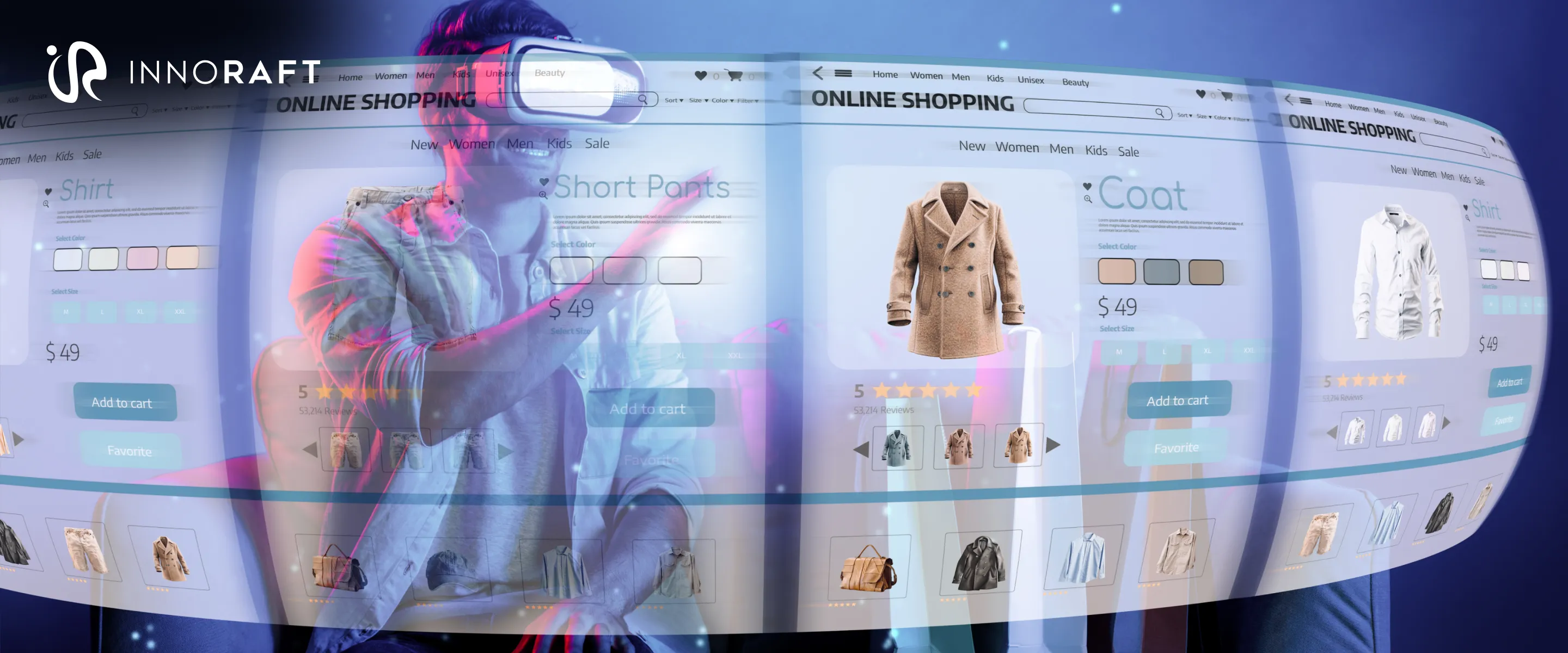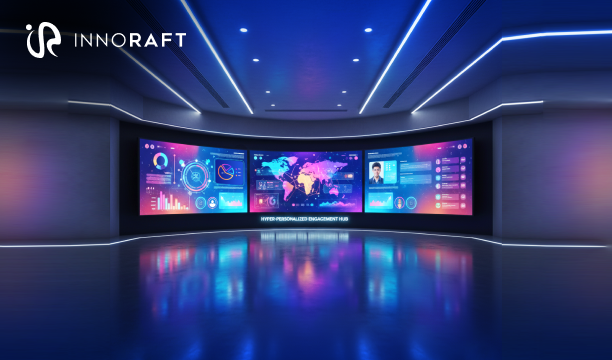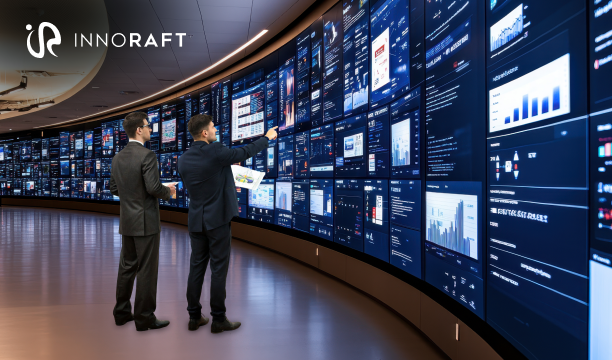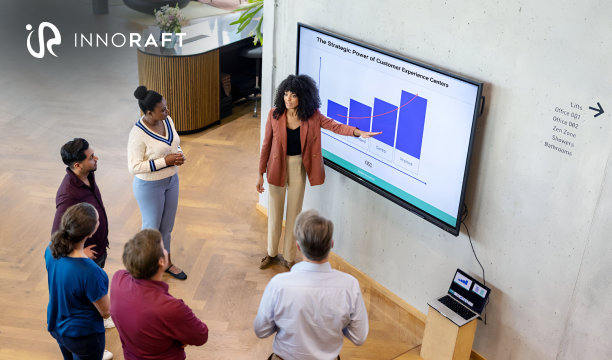How many hours has your team lost in meetings that ended with, “Let’s circle back” or “We’re still evaluating”?
In enterprise decision-making, indecision is expensive. It shows up as delayed product launches, stalled partnerships, and lost ground to faster-moving competitors. And more often than not, the culprit is uncertainty. Leaders are asked to bet big based on static slide decks and vague sales promises. The result? Decisions drift. Momentum stalls.
This is where you can leverage modern Customer Experience Centers (CEC). Think of them as the part innovation lab, part immersive showroom. These spaces are designed to take your clients beyond the hypothetical with hands-on, real-time demos of the solutions they’re evaluating.
CECs bring enterprise decision-makers face to face with technology in action. Teams can interact with tailored demos, test real-world scenarios, and walk away aligned, all with a single session.
What is a Modern CX Center?
A modern Customer Experience Center is a purpose-built space where decision-makers can interact with products and solutions in a real-world context. With immersive experience centers, you can offer hands-on, collaborative, and tailored experiences.
Defining CEC
At its core, a Digital experience hub is:
- A physical or virtual environment where enterprise customers can engage with a company’s offerings,
- Designed for personalized, real-time demonstrations based on the customer’s specific needs,
- A space where product teams, technical experts, and business leaders collaborate with clients to solve real challenges,
It’s not just about showing off services or product features; it’s about showing relevance.
The Shift: From Pitch to Partnership
Let’s be honest: the old way of doing things hasn’t aged well.
- Then: Static PowerPoint decks, canned videos, scripted walkthroughs
- Now: Live product demos, data-driven use cases, on-the-fly customizations
In traditional sales presentations, the customer sits back and listens. A modern CEC encourages client partnership, exploring solutions hands-on. It’s a two-way dialogue, not a one-sided pitch.
Why It Matters
Enterprise buying cycles are complex. When you’re asking a team to commit to a multi-million dollar transformation, they need more than a promise; they need proof.
Modern CX Centers deliver that proof by transforming the abstract into the tangible. Instead of telling your clients about how your product might fit their needs, you can directly show them and empower them to test it with real-time product demos. This also allows your clients to ask questions directly to your team and receive prompt answers and guidance.
It’s this shift, from telling to showing, from passive to active - that sets modern CX Centers apart.
The Power of "Seeing is Believing": How Real-Time Demos Drive Clarity
If you’ve ever sat through a 40-slide deck and walked away with more questions than answers, you’re not alone. The truth is, complex solutions don’t sell themselves on paper; they come to life when people can actually see them in action. In fact, interactive demos are so effective that studies show 8.5% of buyers convert after viewing such demos, which is 1.7 times higher than after viewing static screenshots.
That’s the power of interactive demos for B2B sales inside a customer experience center.
From Abstract to Tangible
Most enterprise solutions are layered, technical, and often hard to visualize. A live, interactive demo breaks through that complexity better than any enterprise decision-making tools by making the solution feel real. Clients don’t just hear about capabilities—they experience them.
- Instead of “Our platform supports real-time analytics,” they see a live dashboard updating with real data.
- Instead of “You can integrate with your existing tools,” they watch it happen on-screen.
And that’s how the vague idea of how your product works becomes real and visible to your clients.
Answering the “What Ifs” Instantly
In traditional briefing centers for digital transformation, a question like: “What if we try to integrate this with our current CRM?” usually gets a follow-up call, another slide deck, or a delayed proof of concept.
Inside a modern CX Center, the same question sparks real-time exploration:
- “Let’s pull in your sample data and see how it looks.”
- “We’ll show you how that integration works, right now.”
- “Here’s what it would take to configure that feature for your use case.”
This immediacy builds trust, removing friction from the buying process and encouraging an environment of collaborative innovation crucial to staying ahead of the competitors.
Building Consensus Across Stakeholders
Shared understanding is perhaps one of the underrated live product demonstration benefits.
In most enterprise deals, you’re not just convincing one person; you’re aligning a group. CIOs, security leads, operations managers, and budget owners all come to the table with different concerns.
A live, immersive demo creates a single, shared reference point. Everyone sees the same thing. Everyone gets their questions answered in context. This shortens the feedback loop and helps build consensus faster.
The Measurable Impact: Accelerating Decisions & Reducing Risk
Well-run CX centers for enterprise decisions doesn’t just feel impressive, it also delivers business outcomes you can measure. When stakeholders interact with tailored demos in real time, the results go far beyond better engagement. You get faster decisions, stronger alignment, and fewer post-sale surprises.
Accelerated Sales Cycles
Enterprise sales are often dragged out by a long string of follow-ups. With immersive experience centers, much of that happens on the spot.
In a single session, you can:
- Address multiple stakeholder concerns at once
- Demonstrate technical feasibility with live configurations
- Cut weeks or even months off traditional sales cycles
Fewer handoffs. Fewer delays. More momentum.
Increased Decision Confidence
When decision-makers see a solution work using their own data and their own challenges, they gain confidence in your product that cannot be created with a simple brochure or pitch deck.
- Confidence that the technology fits their environment
- Confidence that their teams can use it
- Confidence that the investment is justified
This clarity reduces hesitation and makes it easier for buyers to say “yes” without second-guessing. This accelerated decision-making process also contributes to successful CEC-driven digital transformation initiatives.
Lower Implementation Risk
Post-sale surprises are expensive. Misunderstandings about capabilities, integration complexity, or scalability often lead to frustration, delays, or even failed rollouts.
But when teams validate technical fit with real-time product demos before signing the deal, they:
- Catch compatibility issues early
- Confirm usability with real users
- Set more accurate expectations across departments
That means smoother implementations, better adoption, and fewer escalations later on.
Conclusion: The Future of Decision-Making is Experiential
The old way of selling, which included slide decks, static demos, and follow-up calls, isn’t just slow. It’s risky. It leaves too much room for doubt, misalignment, and missed opportunities.
Modern CX Centers change that. By creating immersive, real-time product demos tailored to a client’s exact needs, these spaces shift the conversation from what if to let’s see. They accelerate alignment, increase confidence, and reduce implementation risk before a contract is even signed. And if you’re still wondering if a customer experience center is something you need to enhance your sales cycle, here are some key takeaways you can consider:
- CX Centers for enterprise decisions turn abstract ideas into real, tangible experiences. No more guesswork, clients interact directly with the product in their context.
- Live demos drive faster, more confident decisions. Real-time Q&A, live integrations, and hands-on exploration replace long sales cycles and post-sale surprises.
- Consensus is built in the room. Stakeholders from different departments align quickly when they see the same solution working together.
- It’s not just about reducing sales cycle with CX centers, but also about reducing risk. Clients leave with clear expectations, validated feasibility, and fewer implementation pitfalls.
- Experiential selling is the new competitive edge. The teams that show, not just tell, are the ones closing deals faster and smarter.
Don’t settle for another presentation. Give your clients a hands-on, interactive product experience that is built around their goals and their business challenges.
Ready to leverage customer experience centers for stunning real-time product demos? Connect with our experts today!
FAQ
Frequently Asked Questions
- Faster sales cycles: Consolidate discovery, Q&A, and validation in one session.
- Increased decision confidence: Stakeholders see the solution in action, reducing doubt.
- Lower implementation risk: Teams can validate feasibility before committing to a purchase.
Didn’t find what you were looking for here?




